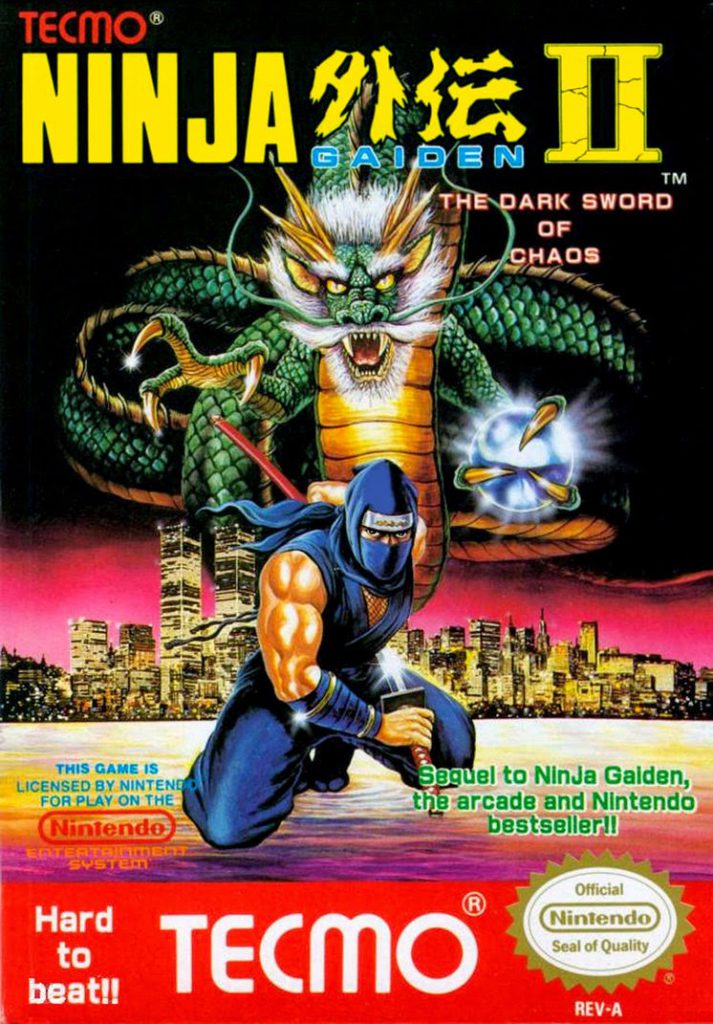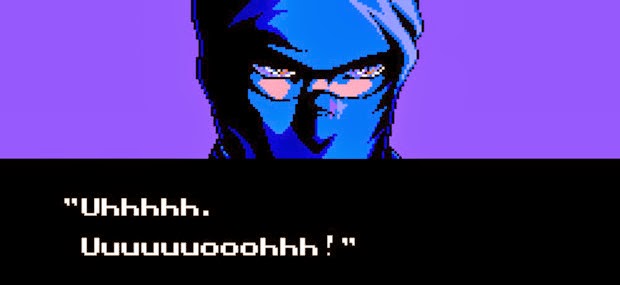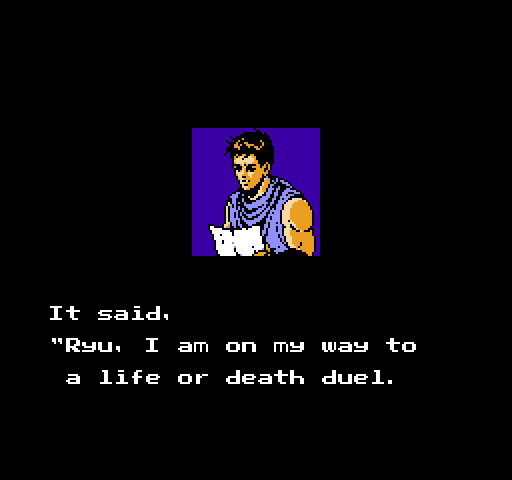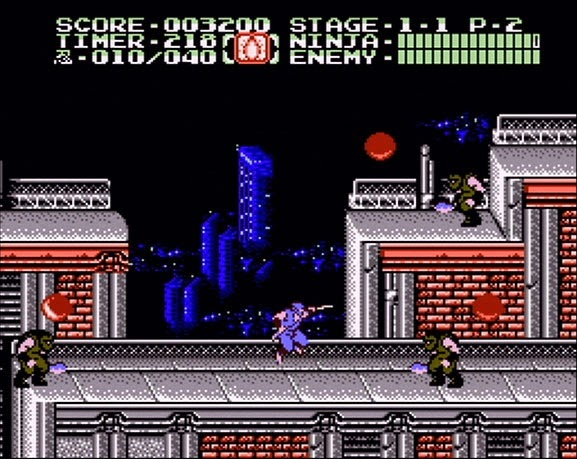The year was 1990, and I was spending the weekend with my best friend, Chris Carroll.
We were both 11-years-old and, let me tell ya, we were Nintendo kids. For a minute there, it seemed like between the two of us, we were doing out damnedest to own and/or play anything and everything for the Nintendo Entertainment System.
Now this particular weekend, the Nintendo game of choice was Ninja Gaiden II: The Dark Sword of Chaos (God, it’s like an 11-year-old named it). I’d never gotten to play the first one, but I had managed to talk my grandmother into buying me installment numeral dose.
Oh, it had nothing to do with word of mouth, or hearing how good the first game was. No, it was all based on the game’s box art…
Look at that cover. How could an 11-year-old not have to have that game?
I mean, check that out. A ninja. And a dragon. And… writing from an Asian culture that’s obviously meant to look ninja-ish. Clearly this game was going to kick some ass. But what wasn’t clear was just how immersed I was going to be immersed in the game due to the simple addition of between level cut scenes.
Here’s how Ninja Gaiden II worked.
You play through each level, which, while pretty fun, is fairly standard 8-bit stuff. I don’t recall anything that revolutionary about the game play (except being able to climb walls… LIKE A NINJA). The game play was just fun, which is all you can ask of a game. At the end of each level, you have a boss fight and then you move on to the next level. But not right away.
See, in Ninja Gaiden II there’s a story, between each level, that story is fleshed out through the use of minimally animated cut scenes. Those cut scenes? Those cut scenes are what kept me playing the game.
Look at it like this, in Super Mario Bros. the player moves through each level not so much to save the princess (even though that’s the “story”) but because each level is progressively more and more challenging than the last. You want to meet the challenge and you want to catch the carrot that is Princess Toadstool. But no one will ever say they were captivated by the story of Super Mario Bros.
In The Legend of Zelda, there’s a little bit of a story, but that game was more scavenger hunt that anything else, or at least, to me it was (later games, of course, would weave a fantastically rich narrative). At no point can I remember the narrative pushing me to play a game, not until Ninja Gaiden II and the tale of Ryu Hayabusa’s descent into World of Darkness.
What was the story?
Honestly, the story is irrelevant. Looking back, it was some nonsense about demonic tribes of chaos looking to come into our world and doing generally dark things. For some reason, the U.S. government was pinning all it’s hopes on sending a lone ninja to topple the forces of darkness rather than, I don’t know, THE MILITARY. You know, stuff an 11-year-old would consider BAD ASS. Like I said, irrelevant.
What is relevant is that it made me look at video games as not just a series of zany levels to progress through, or puzzles to solve, but as a means to immerse a person into an actual narrative. Ninja Gaiden II was the first time that I was enamored by the possibilities of narrative game design and it’s potential. Other games had pulled me into their worlds, Ninja Gaiden II pulled me into its story and kept me there until late into the night when Chris Carroll and I finally made it through to the end.
After Ninja Gaiden II I became kind of obsessed with the stories behind video game worlds and would often try to make sense of them. The Mario games, Zelda, Castlevania, Mega Man all of these games had rich worlds and I was now trying to piece together their stories. And when I couldn’t piece enough together, well, I began writing it myself.
I’ll be honest and admit that if I dig hard enough, I’ll find out there were other games that utilized the same kind of cut scenes to tell a story, but young Chris Brennaman didn’t get sucked into those games.
Young Chris Brennaman didn’t gain an acute appreciation of the ability of a video game to tell a story from those games.
No, Ninja Gaiden II was responsible for that.
Every now and again, I’ve revisted the game, and I freely admit that it’s not the most revolutionary game ever made, or even the most fun. It did, however, make me realize the potential of an entire medium and to expect more from my 8-bit stories and beyond.





















































































































